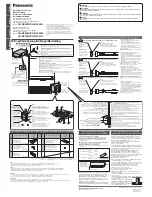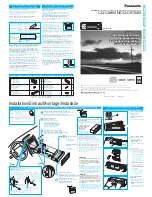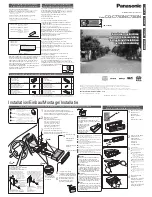
- 12 -
"Battery II"
(Starter Battery,
yellow
):
•
If it is flashing: The power control of the charging converter has reduced the output capacity by more than 30 %
(starter battery discharge protection, starting capacity is maintained), since the voltage of the starter
battery dropped below the adjusted value for "Reduction of the charging capacity" (table 2). The
charging capacity will be increased automatically, as soon as the voltage exceeds the value "increase
of the charging capacity".
"Power"
(
red)
:
•
If it is on:
The charging converter is started and is ready for operation.
•
If it is flashing: 1. Disconnection of safety timer, duration of charging phase I was too long (15 hours), too many
consumers, battery defective (short-circuit of the cells).
Reset only by removal of the signal at D+ / Kl.15 (motor, ignition off).
2. Internal unit failure (overheating), automatic reset after cooling down.
3. Reverse battery of the board battery by mistake (+ and - are mixed up).
Operating Instructions:
•
Interruption of the charging process:
If the control signal D+ or Kl.15 fails or the starter battery is drawn below the adjusted switching off threshold during
the charging process, the charging process will be interrupted. The connected batteries will
not
be
discharged by the
charging converter. In this way, the charging process can be interrupted at any time.
•
Lifetime of the battery: Partially discharged batteries:
In contrast to other battery types, batteries on LiFePO4 basis do
not
have any harmful memory effect. Consequently:
In case of doubt, partially discharged batteries are to be
recharged
as soon as possible, particularly if a longer
standstill can be expected.
•
Lifetime of the battery:
LiFePO4:
Harmful deep discharge must be prevented reliably by the BMS or battery protector!
•
Output overvoltage limitation at the board battery I (OUT):
Sensitive consumers are protected by means of a limitation of the charging voltage to max. 15.0 V during all modes of
charging, independently of the input voltage, charging programs etc.
•
Output overvoltage limitation at the board battery I (OUT):
Charging converters protect themselves against connection of excessive battery voltage rates, or they are switched-
off in case of defective additional charging systems (solar systems, generators etc.) switching threshold 15.5 V
(31.0 V), delay 20 s. Reset by battery <12.75 V (25.5 V) or by disconnection of the control signal D+ or Kl.15.
•
Input overvoltage protection at the starter battery II (IN):
According to the EURO standards, the units supply uniform output voltage rates and output current rates in case of
varying input voltage rates. Extreme overvoltage of > 16.5 V in the starter circuit causes a disconnection.
•
Overload/Overheating Protection Charging Converter:
The charging converter is equipped with a double electronic protection against overload. The unit is equipped with
an automatic protection against adverse installation conditions (e. g. insufficient ventilation, excessive ambient
temperatures) by gradual reduction of the charging capacity.
Tips:
The unit is not activated with running motor:
•
Check the voltage rates,
directly between
Kl. „Battery
II –
“
and
: Measure "
+
", "Sense In+" und "Kl. 15/D+",
fuses, wiring "
+
" and "
–
", stripped cable ends / at the clamping screws.
Full charging current is not reached:
•
Full charging is not effected, since the voltage is too low between Kl. "Battery
II –
" and: "
+
", "Sense In+":
Observe the cable cross-sections and cable lengths, check the fuses, check the switch position S1, S2 according to
table 2.
•
Insufficient voltage supply to "Sense In+" from a distributor or the like: Put the line to plus starter battery.
•
Concealed cutoff relay (such as EBL, EVS) bridges the charging converter: Check connection plan.
•
Battery Board I had been already charged: Turn on devices with high current draw.
•
Charging cable to board I: Check the cross-section and the length, check the fuses, if required, lay sensor line
"Sense Out+".
Downstream current distribution equipment or control units are not working correctly:
•
For instance, the signal D+ is not supplied: Ground (minus) connection between starter and board battery is
missing.
Operation with EBL:
•
The charging converter changes permanently between active and stand-by: "Kl. 15/D+" must be connected
directly to the input EBL-D+ coming from the generator/electronic system of the vehicle.


































